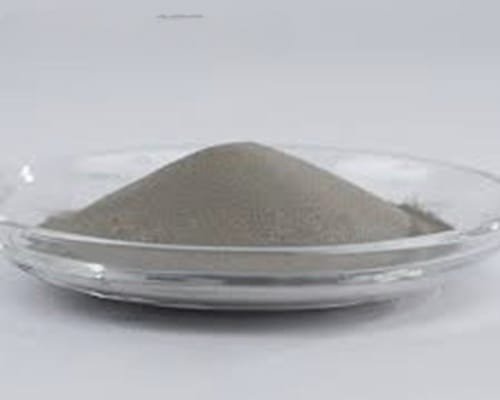Inconel 713C Powder Overview
Inconel 713C (Alloy 713C, N06625) Powder is a nickel-chromium-based, precipitation-hardening cast alloy. Known for its remarkable strength, even at elevated temperatures up to 1800°F (980°C), it offers excellent castability, oxidation resistance, and protection against thermal fatigue. Thanks to its high-temperature durability and ductility, Inconel 713C is frequently used in aerospace and industrial applications, such as vanes and blades for jet engines, guide vanes for turbines, press forging dies, and extrusion dies.
Inconel 713C Powder Specifications
| Product Name | Inconel 713C (Alloy 713C, N06625) Powder |
|---|---|
| Alloy Grade | K418(K18), 518 |
| Related Grades | INCO713C |
| Composition | |
| C | 0.03-0.07 |
| Cr | 11.00-13.00 |
| Ni | Balance |
| Co | 1.00 max |
| Mo | 3.80-5.20 |
| Al | 5.50-6.50 |
| Ti | 0.40-1.00 |
| Fe | 0.50 max |
| Nb | 1.50-2.50 |
| Size Grades | -105+45 micron, -53+15 micron |
| ASTM | / |
| AMS Specification | 5391 |
Applications of Inconel 713C Powder
Forging
Despite being a cast alloy, Inconel 713C poses significant challenges in forging due to the precipitation elements. These elements require a high temperature solution treatment before forging, which is done at temperatures between 2200°F and 1900°F (1205°C to 1040°C). The alloy’s strength and ductility at high temperatures make hot working difficult, requiring specialized techniques.
Heat Treatment
While Inconel 713C is commonly used in the as-cast condition, heat treatment can enhance its stress rupture life. A solution treatment at 2150°F (1175°C) for two hours, followed by air cooling, can increase performance. For optimum stress properties, a stabilizing treatment at 1700°F (925°C) for 16 hours is recommended. Precipitation treatment between 1470°F and 1650°F (800°C to 900°C) is also beneficial for maintaining high-temperature strength.
Machinability
This alloy is notably difficult to machine due to its high work hardening rate. Precision tools and highly rigid equipment are essential for machining Inconel 713C. Final machining is most effective following the precipitation treatment to minimize work hardening effects.
Weldability
Inconel 713C is generally not considered weldable, but limited success has been reported in welding it to other metals or in low-stress situations. When welding is necessary, Hastelloy W or Inconel filler metal 92 can be used with the gas tungsten arc process.





Reviews
There are no reviews yet.